LINKSYS WUSB11V3 Linksys Wireless-B USB Network Adapter v3.0 User Manual User s Manual v2 0 0727
LINKSYS LLC Linksys Wireless-B USB Network Adapter v3.0 User s Manual v2 0 0727
LINKSYS >
Contents
- 1. user manual part 1
- 2. user manual part 2
user manual part 2
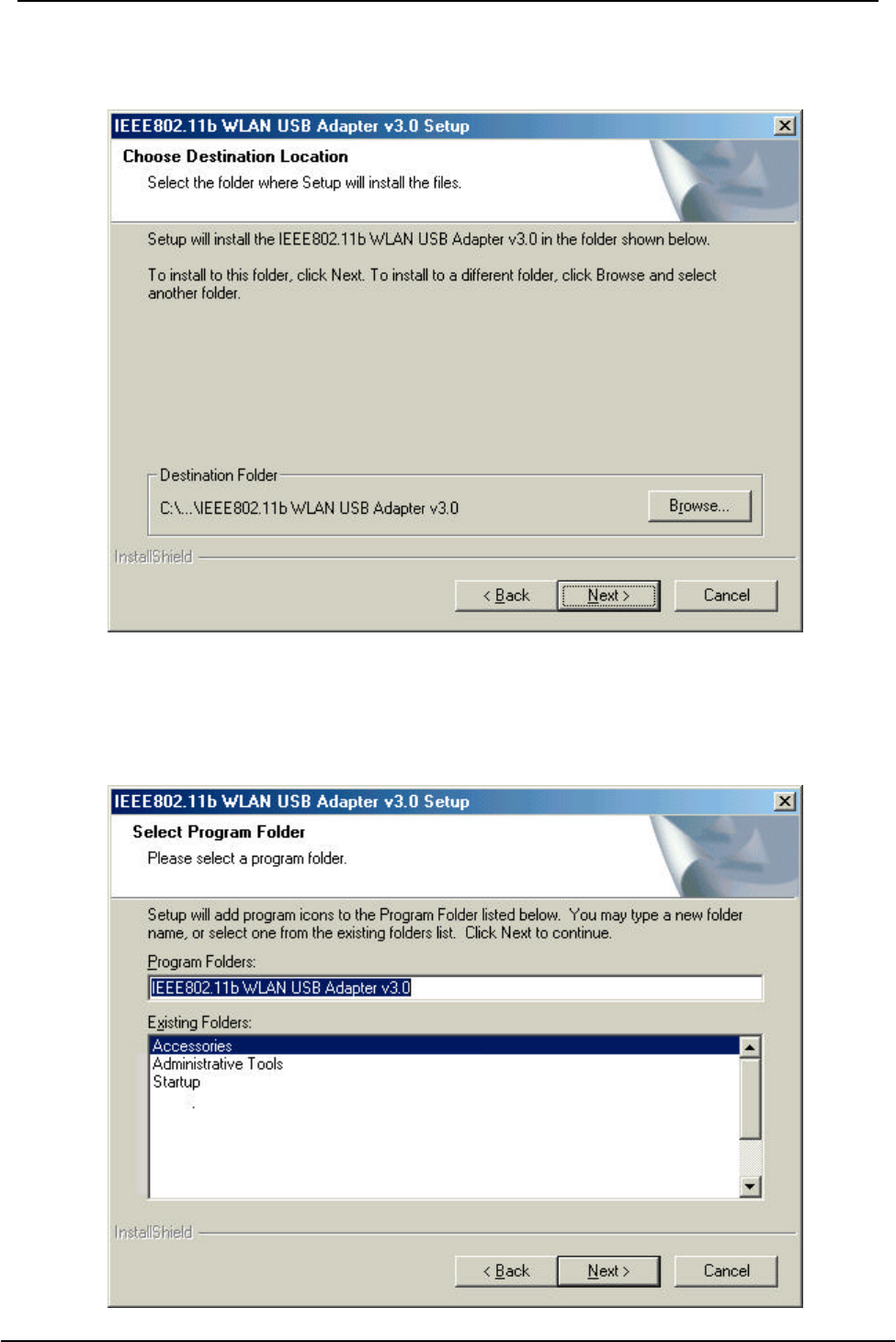
USB Wireless Network Adapter User’s Manual
21
2. The screen will show you the default destination chosen by the utility. Click Next to
continue or click the Browse button to select an alternate destination.
3. The following screen will add program icons to the Program Folder. You may type a
new folder name or select one from the existing folders list. Click Next to continue
or click Back to review or change any settings.
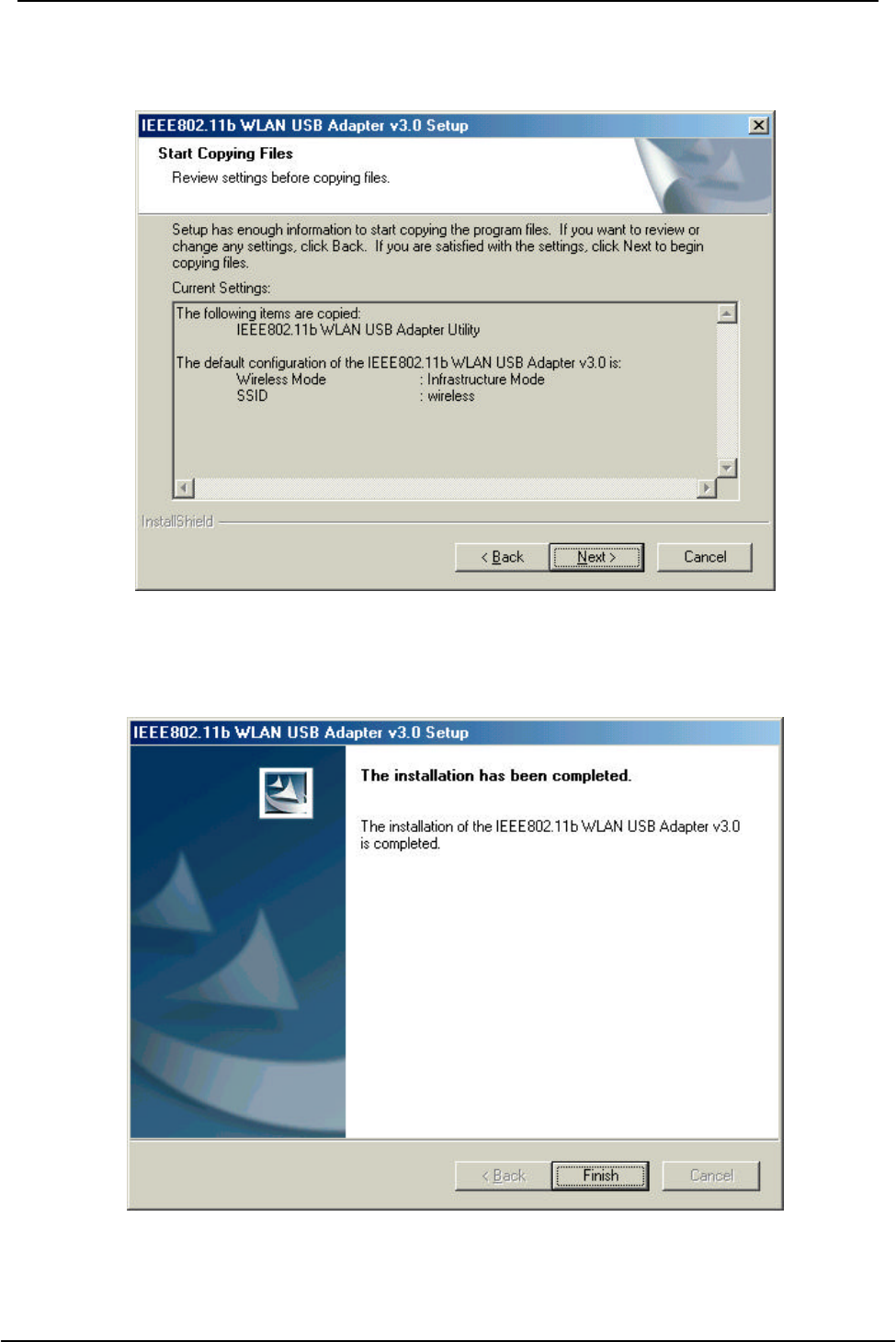
USB Wireless Network Adapter User’s Manual
22
4. The following screen will start to copy the program files. Click Next to continue or
click Back to review or change any settings.
5. The Setup Wizard has finished the installation of Wireless LAN Utility. Click Finish
to exit.
After you have installed the utility, you will see the wireless utility icon in the Windows
taskbar.
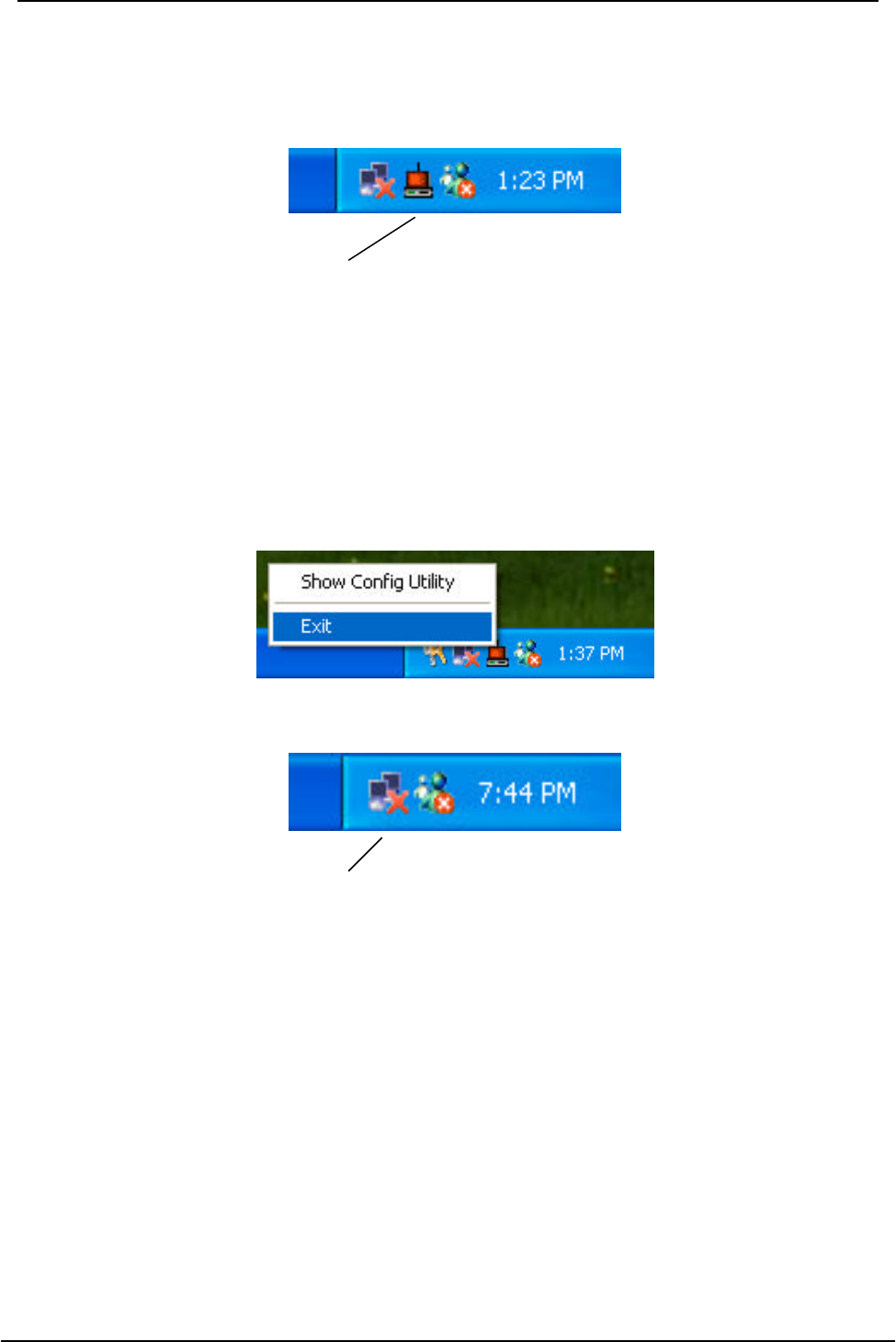
USB Wireless Network Adapter User’s Manual
23
Using Wireless Utility In Windows XP
Wireless LAN Utility
There are two ways to configure USB Wireless Network Adapter. One is Wireless LAN Utility;
the other one is Windows Wireless Network Configuration.
Use Windows Wireless Network Configuration
1. Click the right key of the mouse and Exit Wireless LAN Utility.
2. Click Windows Wireless Network Configuration icon.
Windows Wireless Network Configuration
3. Click Advanced button.
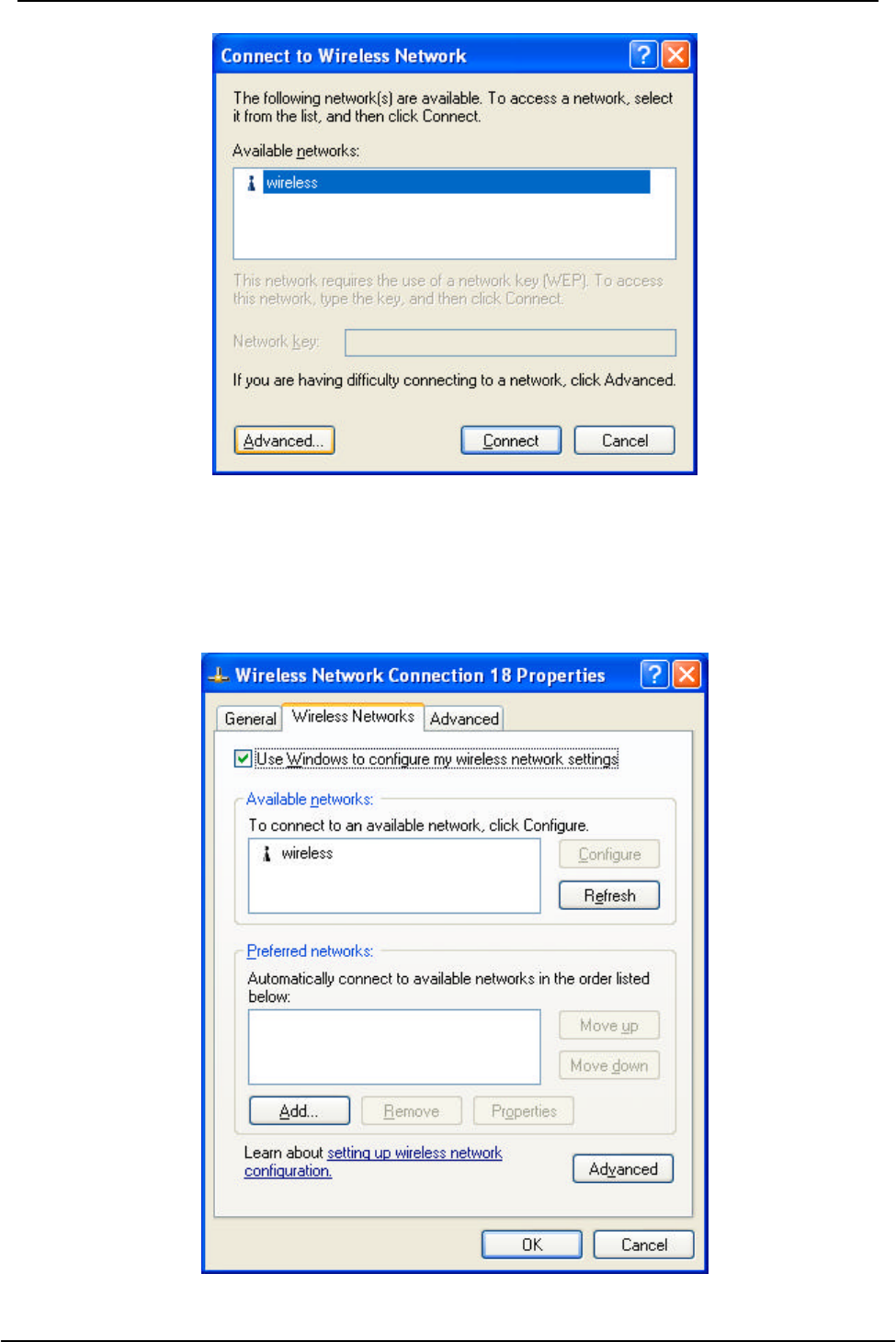
USB Wireless Network Adapter User’s Manual
24
4. Make sure “Use Windows to configure my wireless network settings” is checked
and click OK.
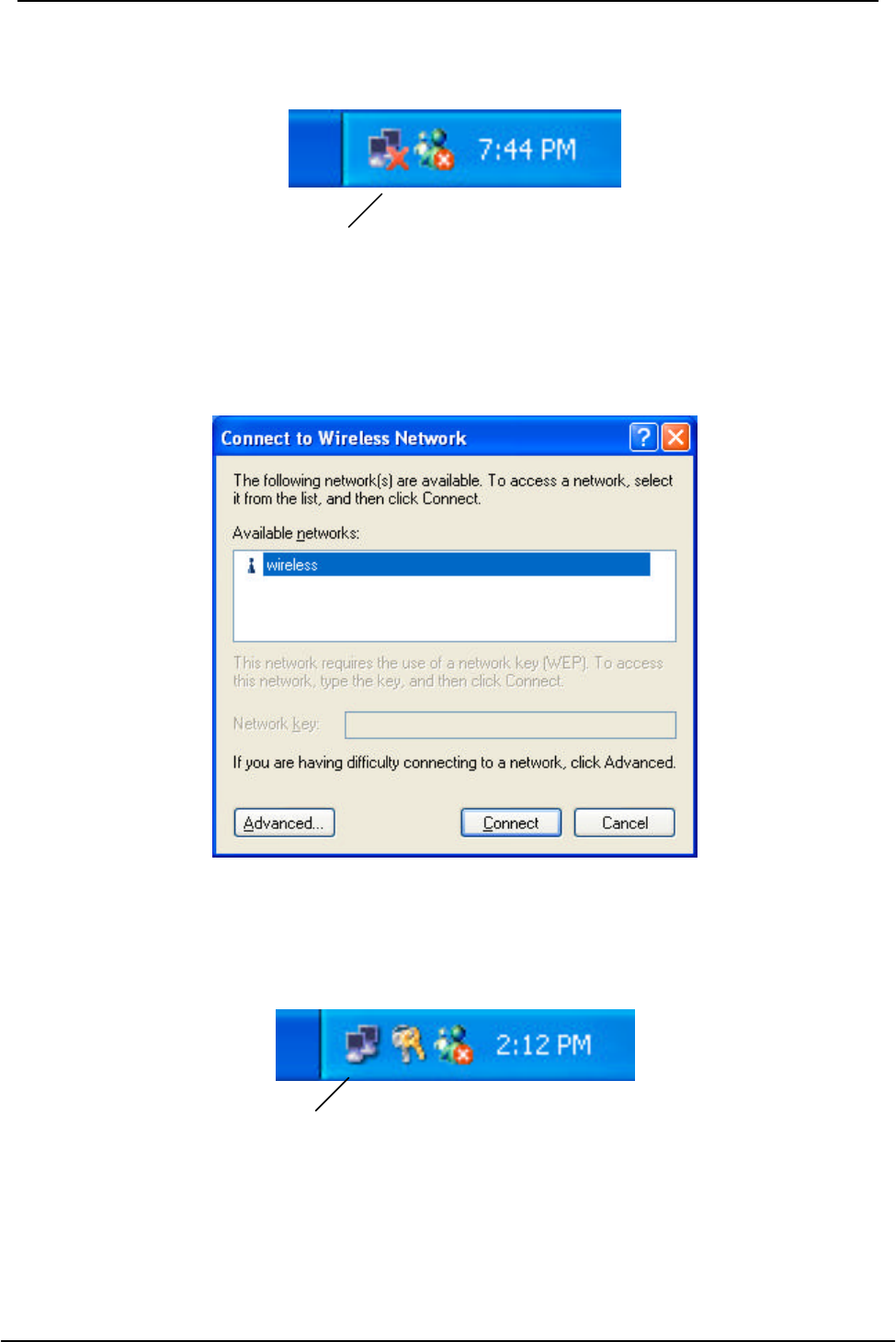
USB Wireless Network Adapter User’s Manual
25
5. Click the Windows Wireless Network Configuration icon again to open the Windows
Wireless Network Configuration.
Windows Wireless Network Configuration
6. Select an available network and click Connect button.
7. The Windows Wireless Network Configuration will be enabled. Click the Windows
Wireless Configure icon.
Windows Wireless Network Configuration is enabled
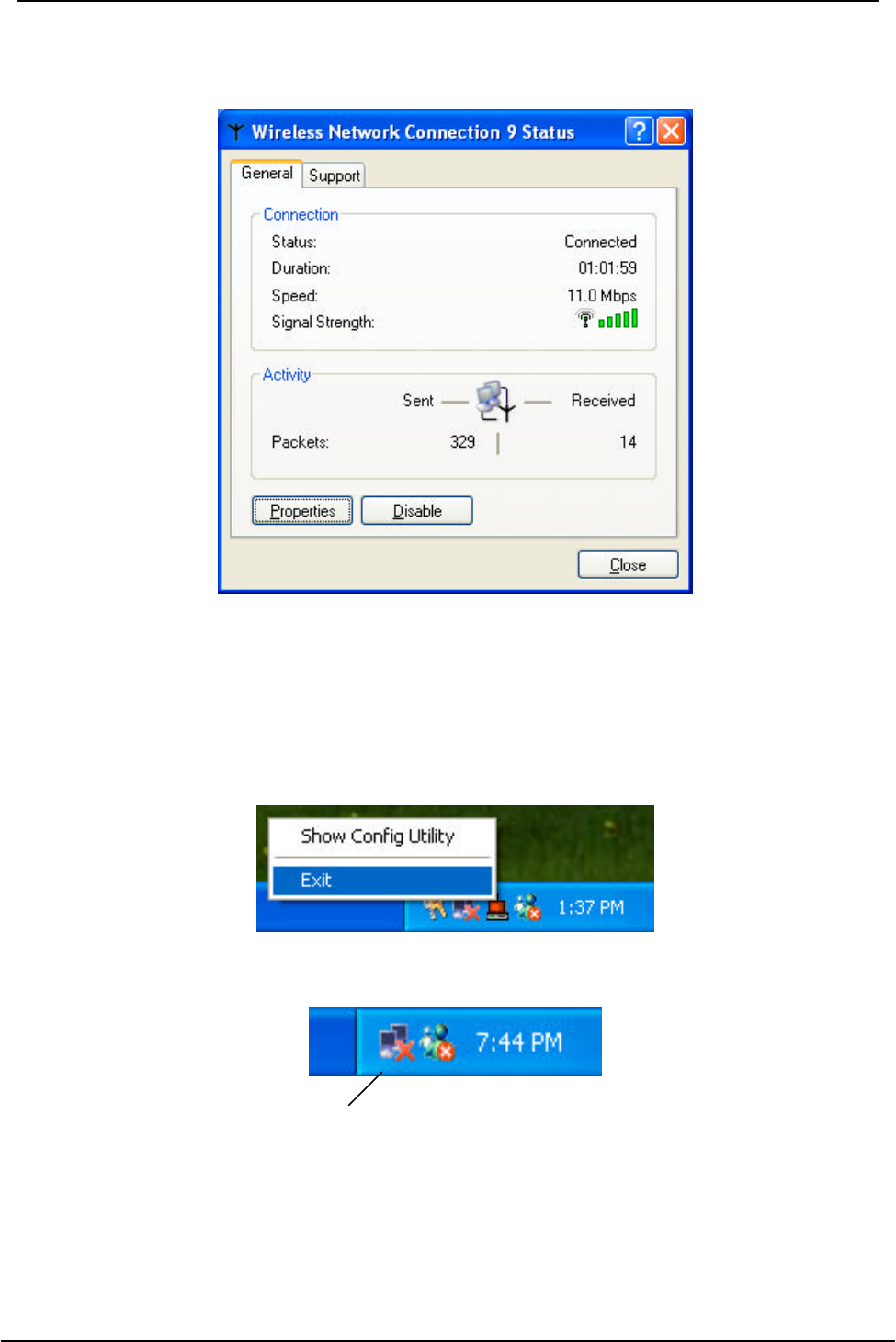
USB Wireless Network Adapter User’s Manual
26
8. Click Properties to start Windows Wireless Network Configuration.
Use Wireless LAN Utility
1. Exit the Wireless LAN Utility.
2. Click Windows Wireless Network Configuration icon.
Windows Wireless Network Configuration
3. Click Advanced button.
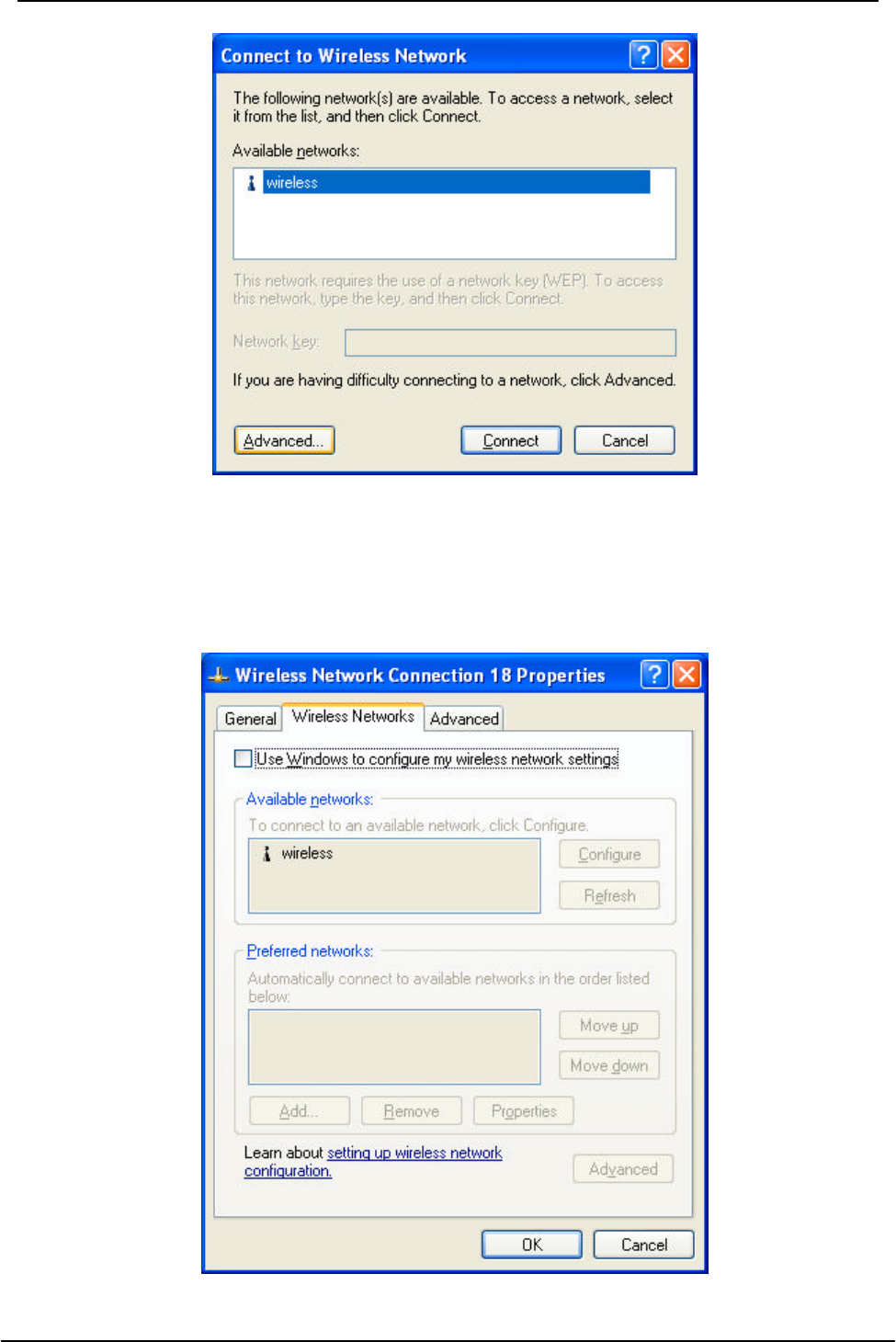
USB Wireless Network Adapter User’s Manual
27
4. Make sure “Use windows to configure my wireless network settings” is unchecked
and then click OK button.
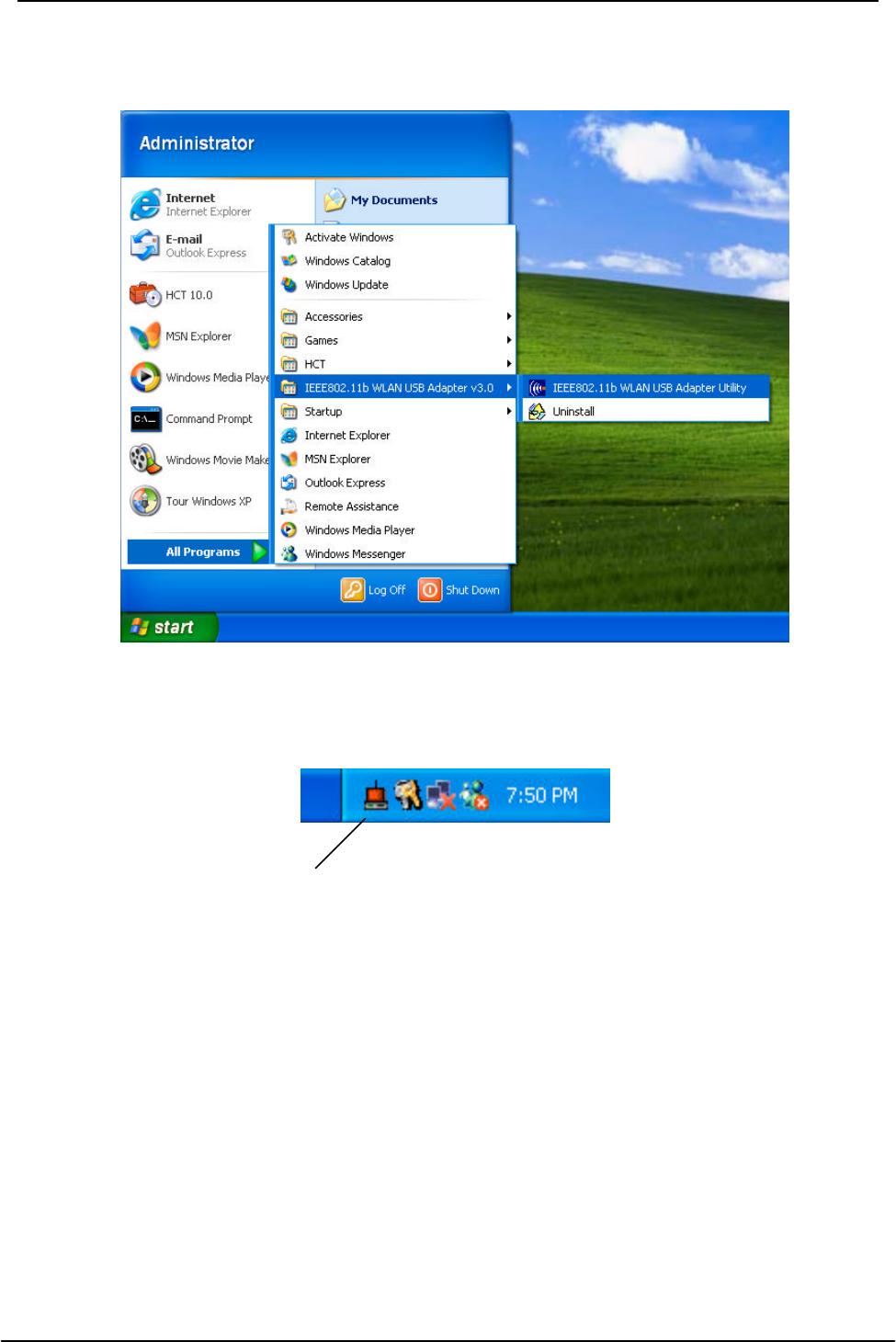
USB Wireless Network Adapter User’s Manual
28
5. Click Start -> All Programs -> IEEE802.11b WLAN USB Adapter v3.0 then click
IEEE802.11b WLAN USB Adapter Utility to restart Wireless LAN Utility.
6. The Wireless LAN Utility will appear, Double-click the icon to open the configuration
utility.
Wireless LAN Utility
7. Click Re-Scan button to start Wireless LAN Utility. (Refer to Configuring the USB
Wireless Network Adapter.)
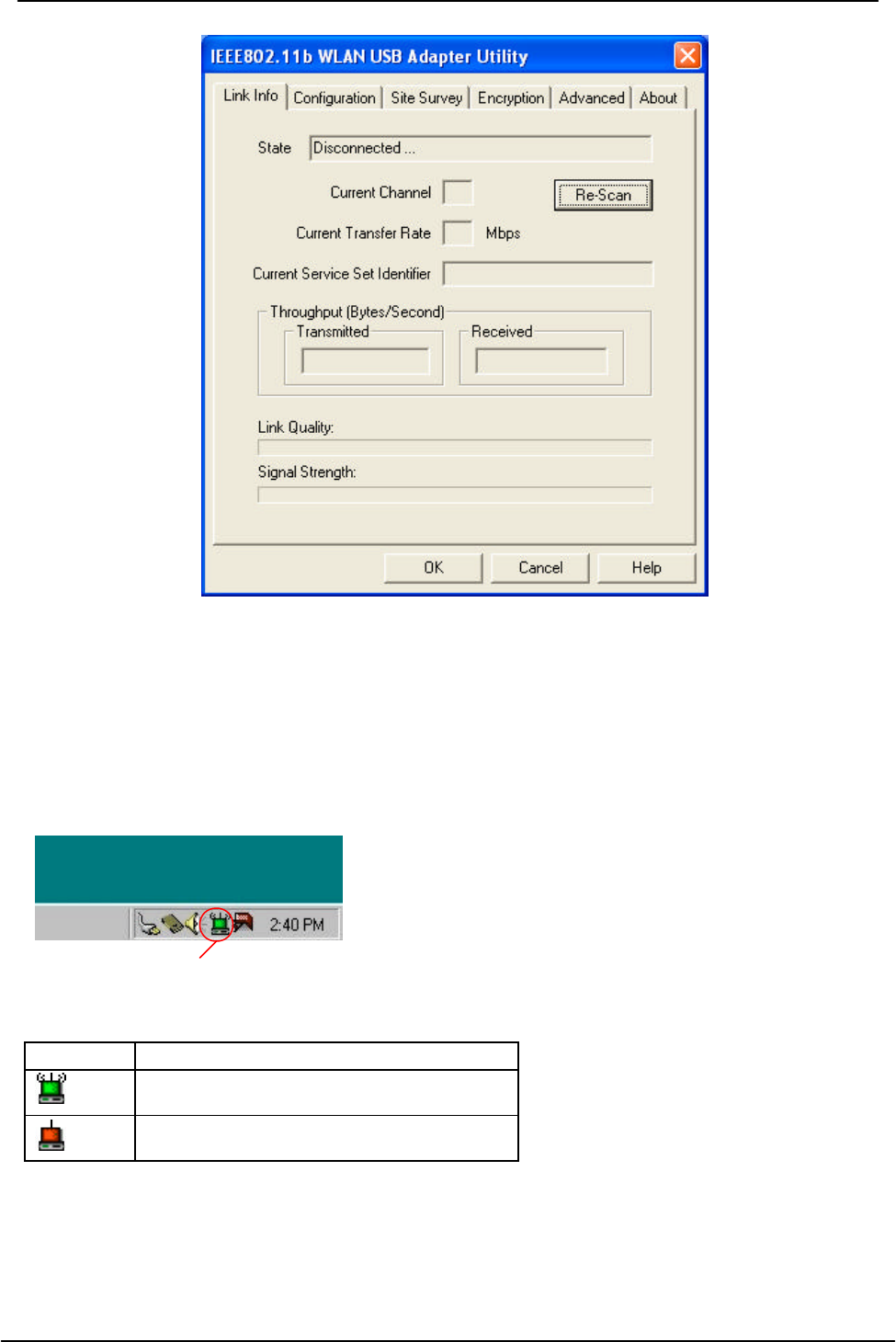
USB Wireless Network Adapter User’s Manual
29
Use Wireless LAN Utility In Windows 98, ME and 2000
Wireless LAN Utility icon
Icon Meaning
Green: indicates a connection is linked to a
wireless network.
Red: indicates that the wireless LAN card is
looking for an available access point.
Double-click the icon to open the Wireless LAN Utility. (Refer to Configuring the USB
Wireless Network Adapter.)
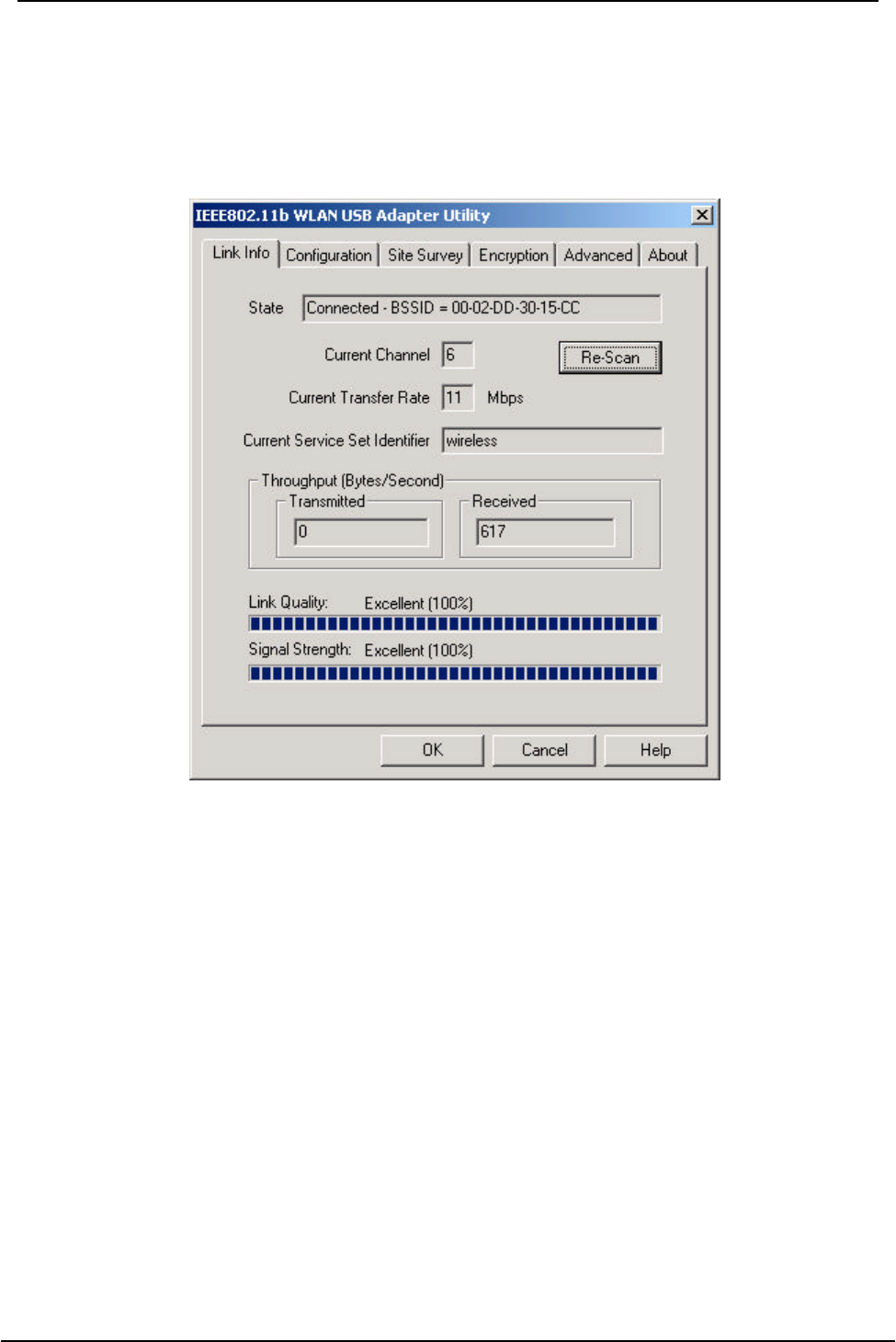
USB Wireless Network Adapter User’s Manual
30
Configuring the USB Wireless Network Adapter
1. This screen shows you the status of your current connection. Click Re-Scan to
search for wireless connection (the adapter will search for the connection
automatically when it is activated).
2. Select the “Configuration” tab. The profile setting allows you to save
configurations in different profiles for different working environments. The default
profile will contain the initial configuration setting when you install the Card. Under
the Operating Mode drop-box, you may choose either Infrastructure or Ad-Hoc.
The Infrastructure mode allows a wireless adapter to communicate with a wired
network employing an Access Point, while the Ad-Hoc mode allows wireless-to-
wireless, peer-to-peer communication. If you choose Infrastructure, the SSID
should have the same name as the Access Point. If you choose Ad-Hoc, all clients
should share the same SSID name. You may also select which Transfer Rate you
wish to use: 1, 2, 5.5, 11Mbps or Auto Rate. Under Power Saving Mode, you can
select Enabled to allow your adapter to go to sleep mode while the adapter doesn’t
precede the data transmission. Or select Disabled to make the adapter never go to
sleep mode. Click Apply to save the settings.
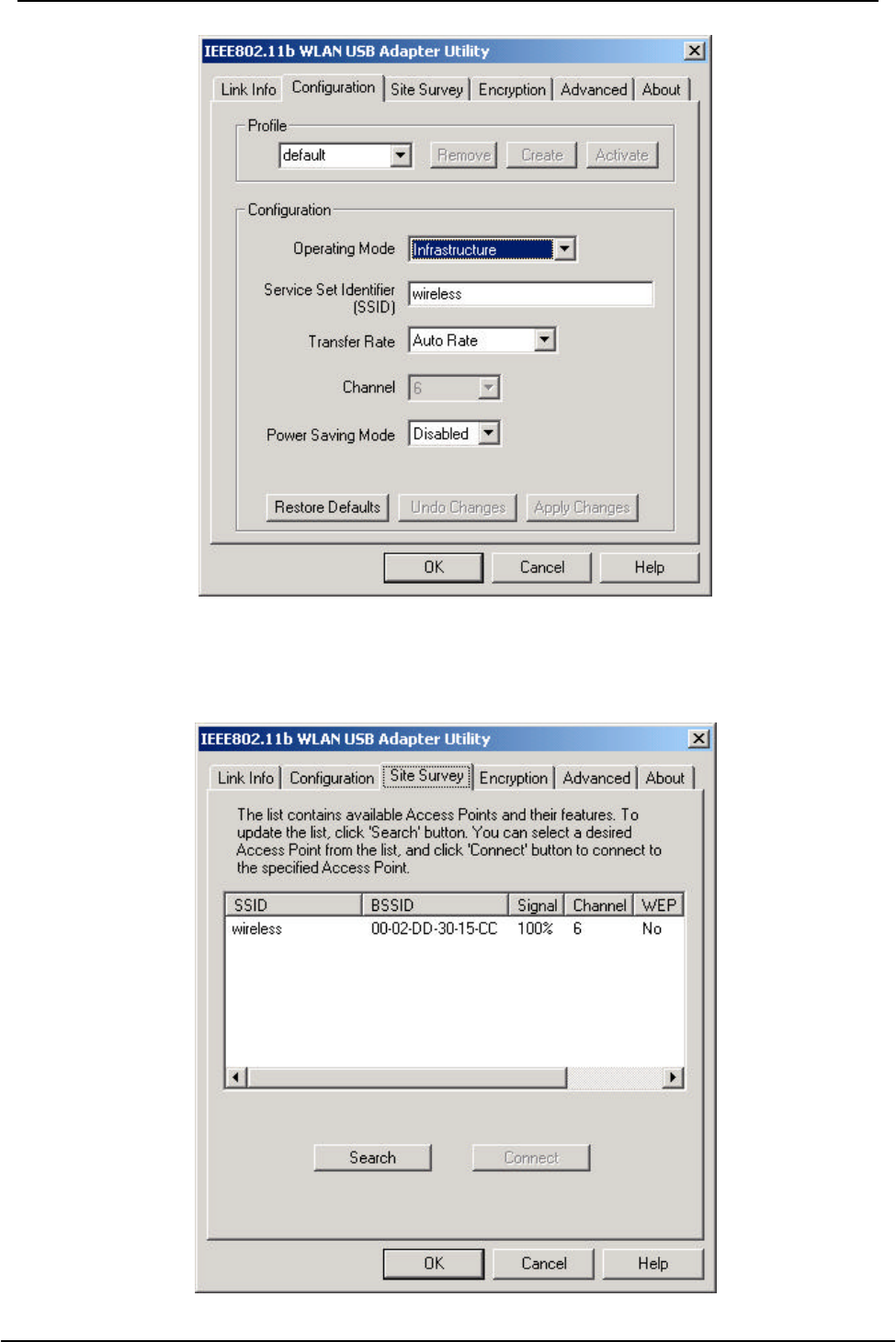
USB Wireless Network Adapter User’s Manual
31
3. Select the “Site Survey” tab. The list on the adjacent screen shows you available
Access Points and their features. Click on the desired Access Point, then click
Connect to connect or Search to search for more Access Points. Click OK when
you are finished.
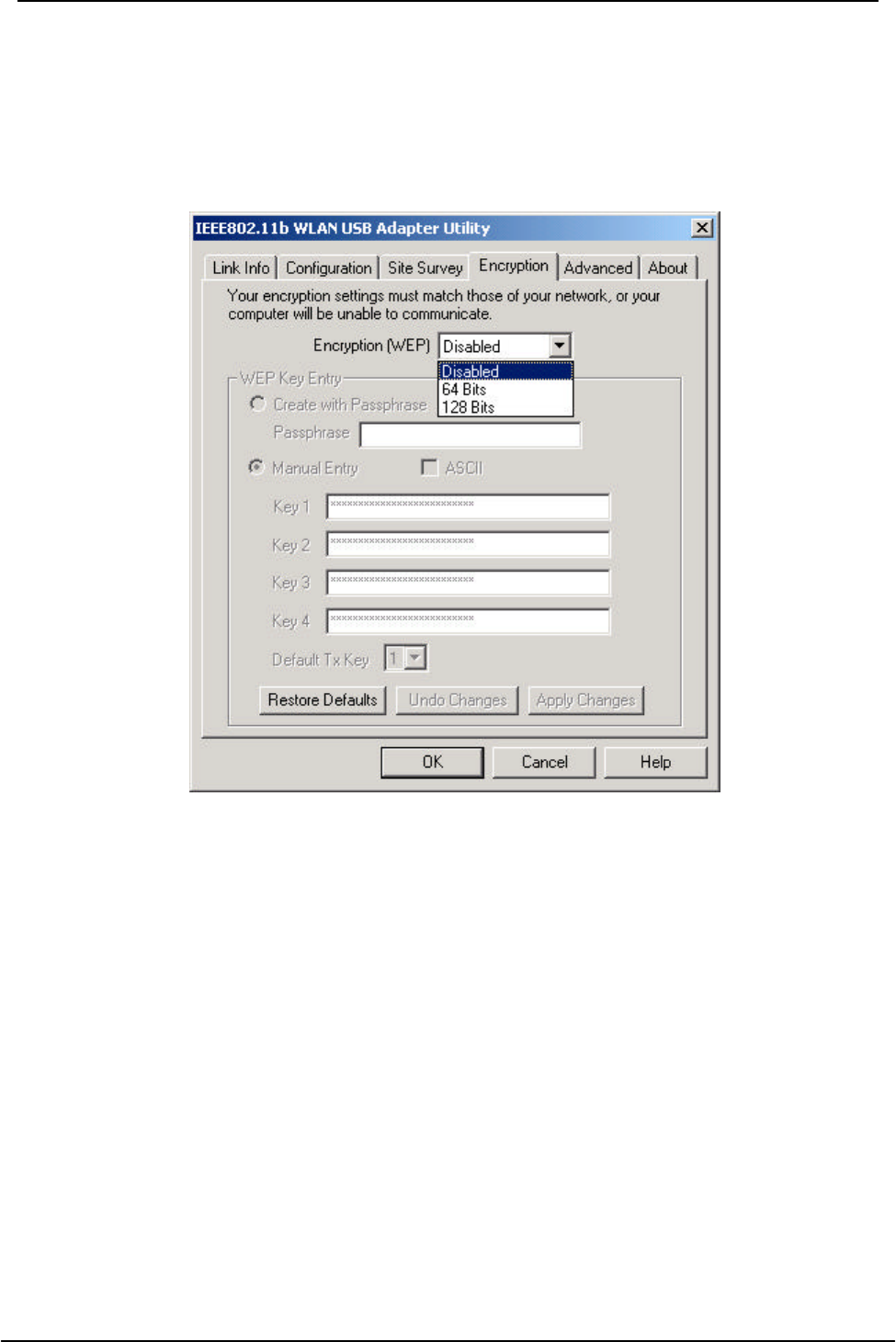
USB Wireless Network Adapter User’s Manual
32
4. Click on the “Encryption” tab. Under the drop-box, you can choose to have WEP
encryption Disabled, 64-Bit, or 128-Bit. Wired Equivalent Privacy (WEP) is an
encryption scheme used to protect wireless data communication. The Disabled
setting prevents the sharing of data with other computers on the WEP network. For
data sharing to be enabled, select the level of encryption desired, either 64 or 128-
bit.
5. Select the “Advanced” tab. You can choose the fragmentation threshold to
define the maximum data frame size your adapter will transmit. When the packet
error rate is high, you may set the threshold value to transmit shorter frames. You
may select RTS/CTS threshold to define when will your adapter send out
RTS/CTS frames to reserve bandwidth for transmission. By using the RTS/CTS
function, you may request bandwidth from AP to allow you have better chance to
send out your data. For the Security, it’s only applicable while WEP is enabled. For
the Authentication Type, the current supported algorithms are Open System,
Shared Key, and Auto. The algorithm will be invoked when associated to Access
Point. To associate to the desired Access Point you must set the same algorithm as
the one of the desired Access Point. When select Auto mode, the driver can auto
detect the Authentication Type of the Access Point you are going to associate. You
can also select Preamble Type, which is for framing synchronization. The possible
settings are Long and Short. The setting must be the same as the setting of the
Access Point you are going to associate.
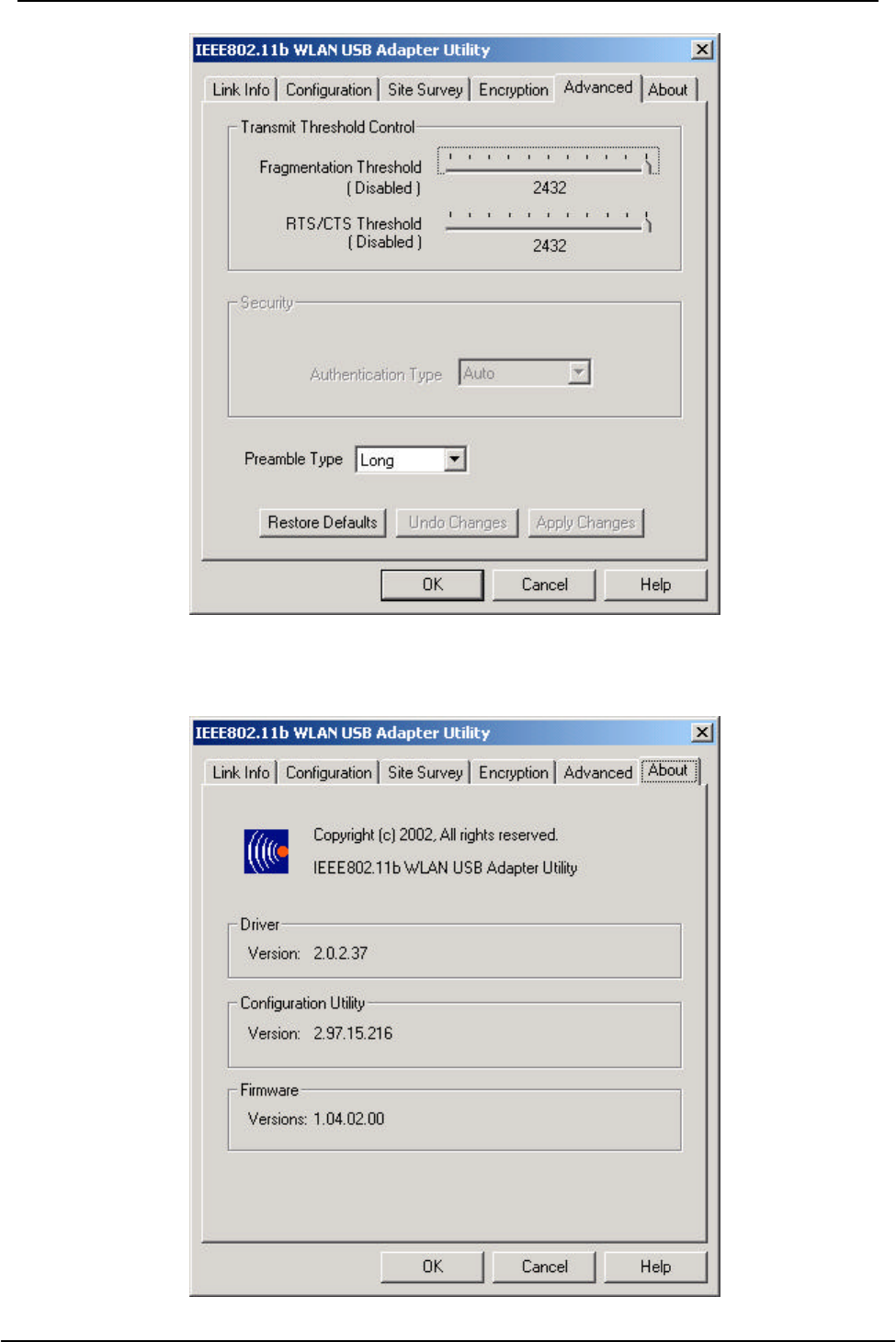
USB Wireless Network Adapter User’s Manual
33
6. The “About” tab shows you copyright and version information about the driver, the
configuration utility, and the firmware. Click OK to complete the configuration.
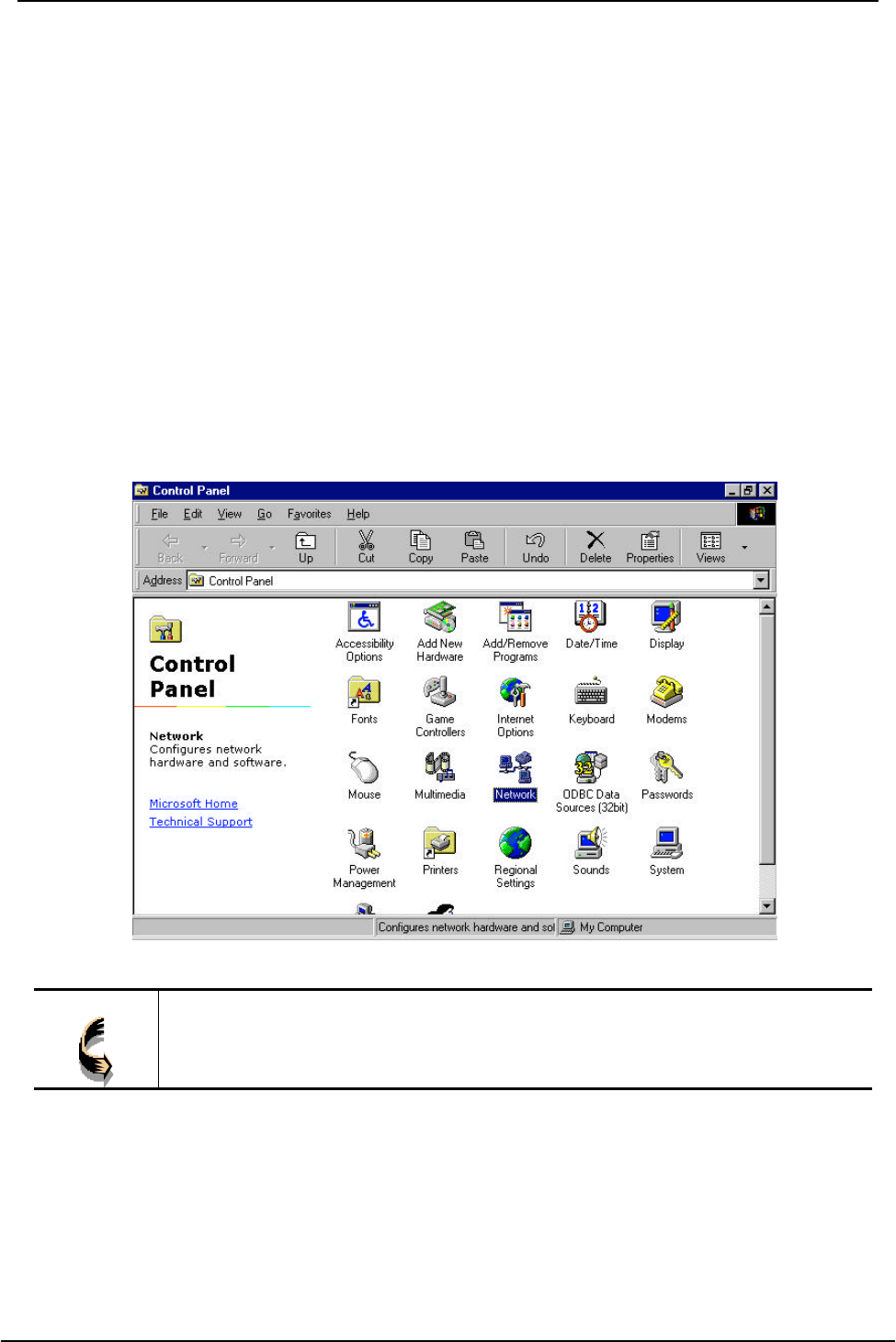
USB Wireless Network Adapter User’s Manual
34
Chapter 5 – Installing Network Protocols
Protocols are necessary for computers to be recognized on your network. Windows
2000/XP users need to check their Windows User Guides for protocol installation.
Installing the Network Protocols for Windows 98 and
ME
1. From the Start Menu, select Settings and bring up the Control Panel. From the
Control Panel, double-click on the Network icon.
Note! Before adding any network protocols, verify that the protocol is not
already installed. Never install duplicate protocols.
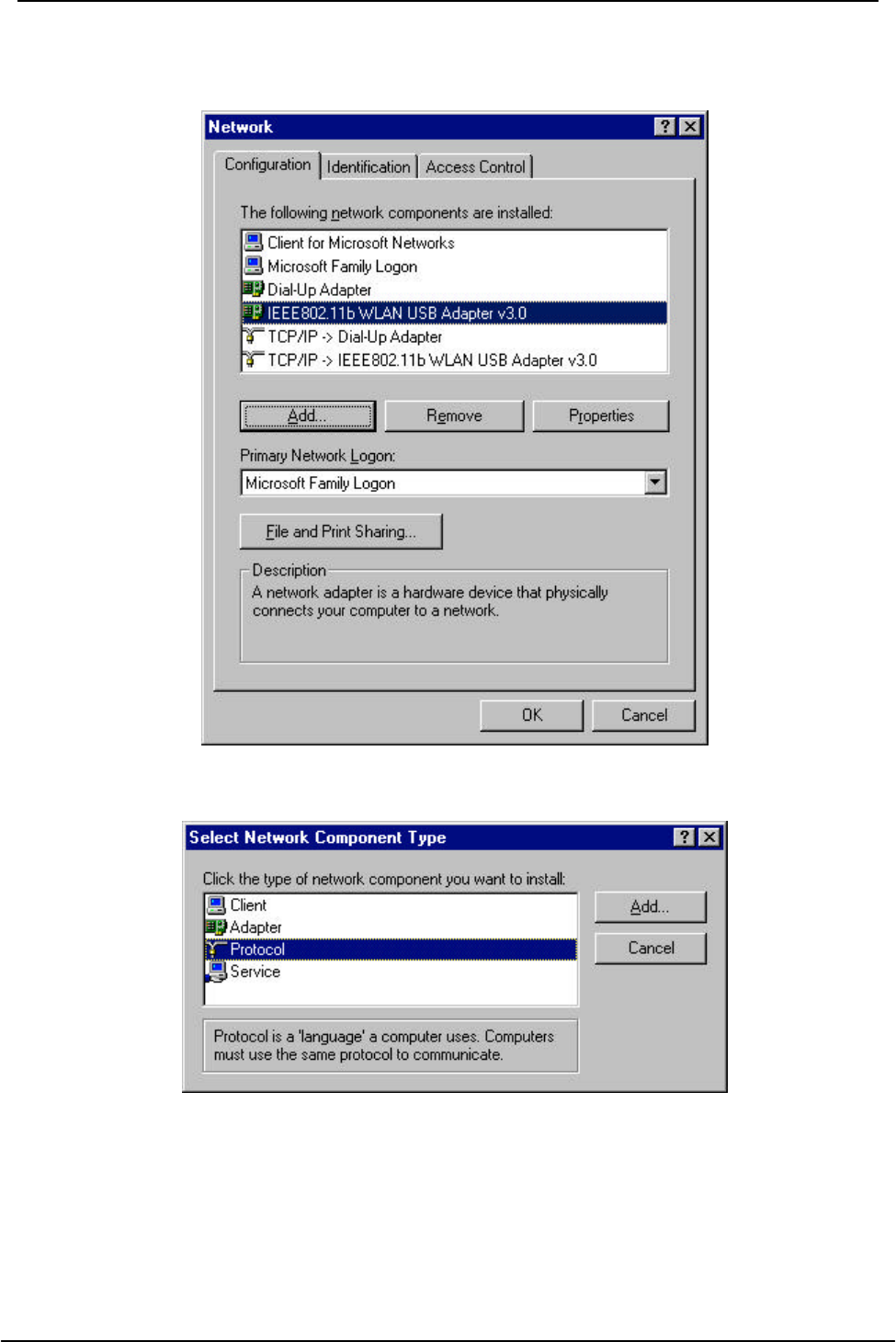
USB Wireless Network Adapter User’s Manual
35
2. Select IEEE802.11b WLAN USB Adapter v3.0 from the list and click the Add
button.
3. Highlight Protocol and click the Add button.
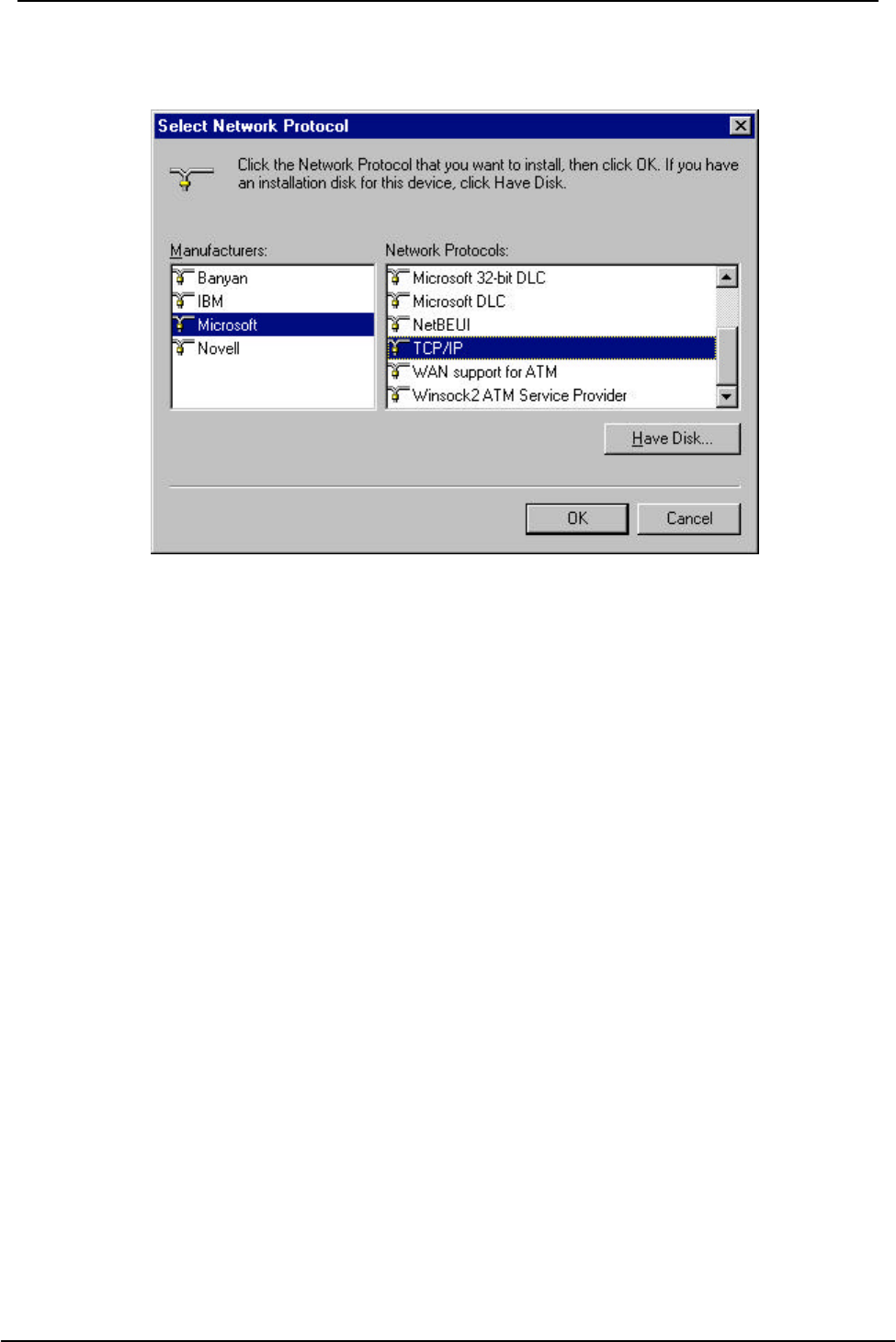
USB Wireless Network Adapter User’s Manual
36
4. Select Microsoft from the list of “Manufacturers” and TCP/IP from the list of
“Network Protocols” and click the OK button to finish the installation.

USB Wireless Network Adapter User’s Manual
37
Appendix A – FAQ
1. What is IEEE 802.11 standard?
Ø The IEEE 802.11 is a wireless LAN industry standard, and the objective
of IEEE 802.11 is to make sure that different manufactures’ wireless LAN
devices can communicate to each other.
2. What is WEP?
Ø As described in the IEEE 802.11 standard, WEP (Wired Equivalent
Privacy) is a data privacy mechanism based on a 40 bit shared key
algorithm.
3. My notebook / desktop PC cannot recognize the USB Wireless Network
Adapter.
Ø Please make sure that the Adapter is inserted into the USB port of your
notebook / desktop PC properly.
Ø And also make sure that the USB controller is enabled in the BIOS of
your notebook / desktop PC.
4. How to check that the USB controller on my notebook / desktop PC is
working properly?
Ø Right click on My Computer and select Properties. Click on the Device
Manager tab and select the Universal Serial Bus Controllers. Click on
Properties button. In the General tab, check under “Device status” that
the USB controller is working properly.
5. The Adapter does not work properly.
Ø Check that the Adapter drivers are loaded properly. You can easily check
it through the Network Adapter (Right click on My Computer and select
Properties. Click on the Device Manager tab and select the Network
Adapter). If there is a yellow exclamation mark on USB Wireless
Network Adapter, the resource may be conflicting. Please uninstall the
Adapter and restart your notebook / desktop PC. The repeat hardware
and software installation as specified in this manual.
6. In Infrastructure mode, my notebook / desktop PC cannot communicate
with the others PCs on the network.
Ø First, make sure that the SSID is same as the others PC.
Ø Check that your Adapter is configured on the same channel & WEP as
the others PCs on the network.

USB Wireless Network Adapter User’s Manual
38
Appendix B – Specifications
Standards: IEEE 802.11b
USB 1.0, 1.1
Channels: 11 Channels (US, Canada)
13 Channels (Europe)
14 Channels (Japan)
Antenna: Dipole Antenna inside
Frequency: 2.412 to 2.4835GHz (Industrial Scientific Medical Band)
Data Rate: up to 11Mbps
Operating Ranges: Indoor (varies depends on the environment):
Up to 50M @ 11Mbps
Up to 80M @ 5.5Mbps
Outdoor (varies depends on the environment):
Up to 150M @ 11Mbps
Up to 300M @ 5.5Mbps
Temperature: Operating: 0° ~ 55° C
Storage: -25° ~ 70° C
Humidity: 10% to 90% (non-condensing)